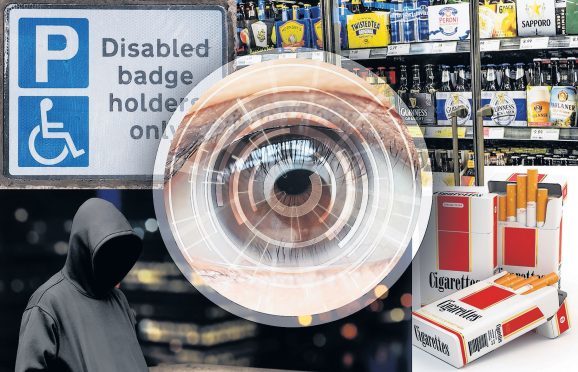Highland Council has been ordered to tighten-up its procedures for using controversial snooping powers on local residents and businesses.
A new report has revealed that the council has authorised undercover operations 19 times since 2013 – including 10 in the last year.
But inspectors have now found that “basic elements” of the paperwork sanctioning their use to be “deficient”.
One north MSP said last night that “individuals’ privacy is vital” and the methods should only be used as a “last resort”.
The covert powers enable officials to deploy hidden cameras, fake shoppers, bogus social media accounts and other techniques.
They are most commonly authorised for trading standards officials tracking illicit cigarettes and shops believed to be selling tobacco and alcohol to under-age youngsters.
Drivers abusing Blue Badge disabled parking permits – including those belonging to dead people – have also been a common target in Scotland, with vandalism, fraud, the theft of council property, unlicensed fireworks and antisocial behaviour among other reasons given for utilising the measures.
An inspection of Highland Council’s use of the spying practices under the Regulation of Investigatory Powers Scotland Act (Ripsa) described the authority as a “modest” user of the tactics, and identified several “areas of strength”.
However, the Office of the Surveillance Commissioner (OSC) report also found “room for improvement”, including being clearer about who the operations are targeting and why.
David Buxton, who inspected the council on November 3, said: “In the case of each authorisation examined they were found to be deficient in that they were not specific with regards to the detail as to against whom the directed surveillance activity was to be targeted, where the surveillance activity was to take place, and the nature of the surveillance activity being authorised.”
He added: “These are the most basic elements of a directed surveillance authorisation and it was difficult to understand how officers working under the parameters of the authorisations granted could be clear and confident as to what this parameters were.”
John Finnie, Green MSP for the Highlands and islands, said: “I don’t think anyone would dispute that such powers should be available to authorities, however it is vital that they are used proportionately and that there’s appropriate record-keeping to show that the council always carefully justifies its use.
“Individuals privacy is vital and it is only as a last resort that these powers should be used.”
The report outlined three recommendations to improve the way the council uses the powers.
They included putting procedures in place to report Ripsa issues to elected members, that applications for surveillance should provide an assessment of the “actual collateral intrusion risks”, and that when granting an authorisation officers should be specific about who is being targeted, where and why.
Mr Buxton’s report concluded: “In many respects this was a positive inspection.
“The council are at best, a modest user of the legislation and given the unfamiliarity which comes with infrequent exposure the council demonstrated that it was in an appropriate state of preparedness to deal with its responsibilities under the terms of Ripsa.”
He added: “The general quality of the documentation examined was above what I would have expected to encounter given the low volume of exposure to Ripsa authorisations, albeit there is room for improvement, particularly with regards the quality the authorisations granted for directed surveillance.”
The Press and Journal reported in July that permission was granted to spy at least 156 times over five years under Ripsa by four councils – 24 at Aberdeen City, 41 by Aberdeenshire, 58 at Moray and 33 by Highland.
Residents of both Orkney and Shetland had not been the subject of any Ripsa-based operations over the period.
In response to the inspection report, Highland Council’s depute chief executive Michelle Morris said in a report: “The recommendations of the OSC have been considered by the council’s senior responsible officer and members of the Ripsa management
group.
“It is recommended that the comments of the OSC are noted and the recommendations are accepted in full.
“The recommendations will be discharged by introducing regular biannual reporting to the council’s audit and scrutiny committee and undertaking a review of the current policies and procedures.”
